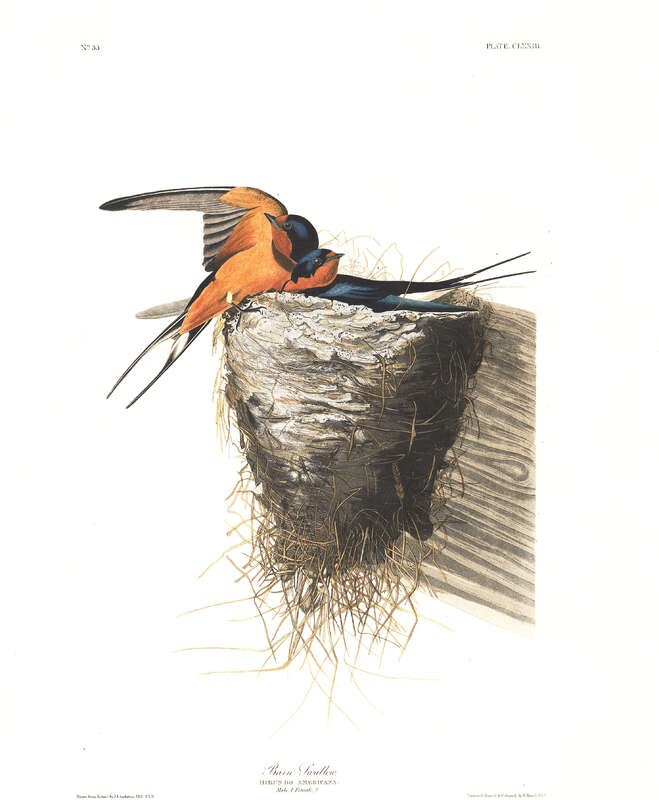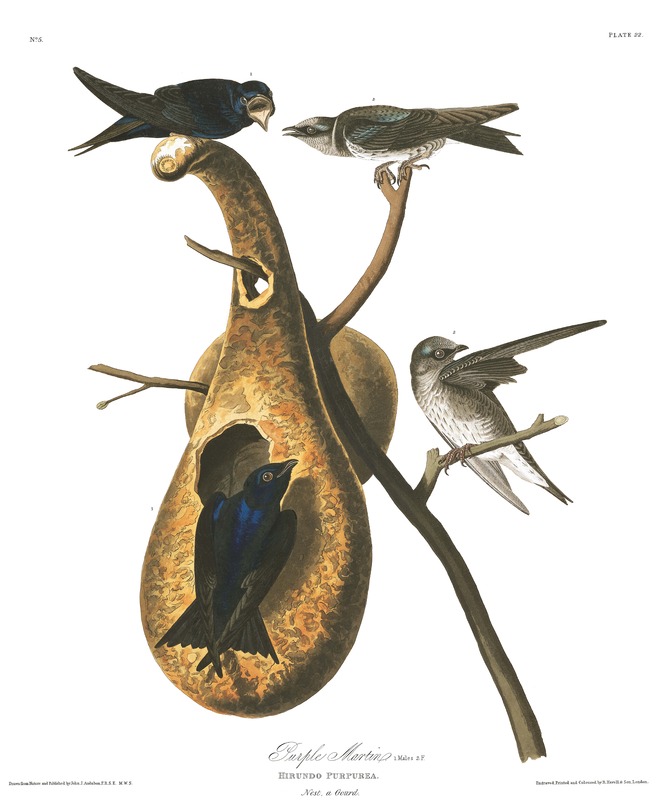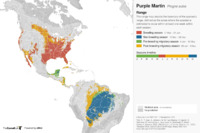Swallows and Martins
Birds in the Hirundinidae family are characterized by their short, wide beaks, short legs, and weak feet. They have long and slender bodies and long, pointed wings, and some species have long, forked tails and uniquely shiny feathers. They are relatively small, ranging from 4-9 inches in length. They do not typically have any sexual dimorphism (males and females look the same), though some martins do. They are insectivores and will catch and often eat their prey in the air. They are found worldwide and many have adapted to live in manmade spaces.
Included below are the Barn Swallow and the Purple Martin.
Barn Swallow
Hirundo rustica
Habitat: Open or semi-open land, farms, fields, marshes, lakes.
Preferred Food: Insects, particularly flying insects such as beetles. Only occasionally eats a few berries or seeds.
Fun Fact: It is extremely rare to find a barn swallow nest in a location that isn’t man-made as they prefer to nest in structures such as bridges and barns.
Purple Martin
Progne subis
Habitat: Towns, farms, semi-open country near water; in west, also mountain forest, saguaro desert.
Preferred Food: Insects. Feeds on a wide variety of flying insects and occasionally eats spiders.
Fun Fact: John James Audubon used martin houses (boxes) to determine which inn to stay in at night, stating, “Almost every country tavern has a martin box on the upper part of its sign-board; and I have observed that the handsomer the box, the better does the inn generally prove to be.”



